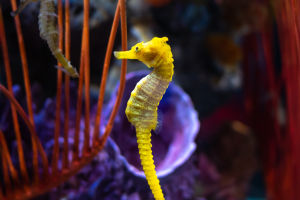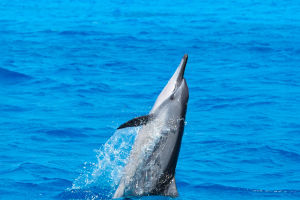Imagine an animal that can go from 0 to 100 kilometers per hour in just a few strides—faster than most sports cars. That animal is the cheetah, the undisputed speed champion of the animal kingdom.
But have you ever wondered how this big cat manages to catch prey in mere seconds without collapsing from exhaustion? The answer lies in a combination of explosive power, advanced biomechanics, and specialized adaptations.
Let's explore the incredible science behind the cheetah's high-speed hunting strategy.
Built for Speed: Anatomy of a Hunter
The cheetah's body is engineered for maximum acceleration and agility. Unlike other big cats, its frame is slim, lightweight, and highly flexible. Its long limbs, small collarbone, and elongated spine allow for an extended stride—up to 7 meters in a single leap. In a full sprint, a cheetah takes about three strides per second, reaching peak speeds of 100–120 km/h.
The head is small and aerodynamic, reducing air resistance. Meanwhile, the large nostrils, lungs, heart, and adrenal glands supply an instant boost of oxygen and energy, enabling quick bursts of activity.
Muscles Designed for Power
Cheetahs rely on fast-twitch muscle fibers, which are excellent for generating explosive force. These muscles are particularly concentrated in their hind limbs and back, giving them the strength to launch forward with incredible acceleration. However, fast-twitch fibers also fatigue quickly, which explains why cheetahs can only maintain their top speed for 20 to 30 seconds.
This means timing and strategy are everything. A missed opportunity often means lost energy and a long wait before the next chase.
The Role of the Tail
One of the most overlooked but essential parts of a cheetah's body is its long, muscular tail. The tail acts as a dynamic rudder, helping the animal steer and maintain balance while zigzagging at high speeds. When prey makes a sharp turn—a common survival tactic—the cheetah's tail swings in the opposite direction, allowing it to make quick course corrections mid-sprint.
According to studies published in the Journal of Experimental Biology, the tail significantly improves turning stability and helps prevent the cheetah from tumbling during rapid direction changes.
Claws That Don't Retract
Unlike lions or leopards, a cheetah's claws are semi-retractable, functioning more like cleats. These claws provide constant traction, especially on loose ground like savannas or dusty plains. This grip, combined with their specialized paw pads, helps the cheetah maintain speed and control during the sprint. Think of them as natural running shoes with built-in spikes.
Eyes on the Target
Cheetahs have forward-facing eyes with excellent binocular vision. This allows them to precisely judge distances while sprinting. Their eyes also feature a high concentration of retinal cells specialized for sharp vision, giving them the ability to detect subtle movements at long distances. During a chase, cheetahs rely heavily on sight—not smell or hearing—to track and anticipate the prey's next move.
Stealth Before Speed
Cheetahs don't just chase anything they see. They use stealth to their advantage, getting as close as 30 meters to their target before initiating a high-speed sprint. This reduces the distance they must cover at full speed, saving energy and increasing their chances of success. Cheetahs often hunt during cooler parts of the day—early morning or late afternoon—to avoid overheating.
Precision Over Power
Unlike other predators that rely on brute strength or ambush attacks, cheetahs depend on precision and timing. Once they close the gap, they trip their prey—often a gazelle or impala—with a swipe of their paw and then deliver a suffocating bite to the neck. The entire chase usually lasts less than a minute. Any longer, and the cheetah risks overheating or collapsing from fatigue.
Heat and Limits: Why the Chase Is Short
Despite their athleticism, cheetahs have a major limitation: heat buildup. When sprinting, their body temperature can rise really high. If they don't stop quickly, they risk heatstroke. After a chase—successful or not—a cheetah must rest for 20–30 minutes to cool down before moving again.
Researchers from the National Zoo in Washington D.C. have shown that cheetahs increase their breathing rate from 60 to 150 breaths per minute during a chase. The body's inability to efficiently release all the excess heat is the biggest reason why they can't run for long.
Adaptation Through Evolution
Over millions of years, cheetahs have evolved to specialize in short-distance hunting. Fossil records and genetic studies suggest that modern cheetahs diverged from other big cats about 4 to 5 million years ago. Their low genetic diversity today makes them more vulnerable to disease and environmental changes, but their physiological specialization continues to awe scientists and wildlife lovers alike.
Speed Versus Strategy: Not Always the Winner
Despite their speed, cheetahs don't always win. They succeed in only about 40–50% of hunts. Their kills are also at risk of being stolen by larger predators like lions or hyenas, who outmatch them in strength. This adds another layer of difficulty to survival, as cheetahs must eat quickly or lose their hard-earned meal.
Conclusion: The Art of the Chase
The cheetah is a stunning example of what nature can achieve through specialization. Every part of its body—from muscles to tail to lungs—has evolved for one purpose: the perfect sprint. But speed alone doesn't guarantee success. It's the combination of stealth, timing, vision, and biomechanics that makes the cheetah a true master of the chase.
Have you ever seen a cheetah run, even in slow motion? It's a breathtaking sight that reminds us how far nature will go to fine-tune survival. Let us know what animal adaptations you find most fascinating—we'd love to hear your thoughts!


